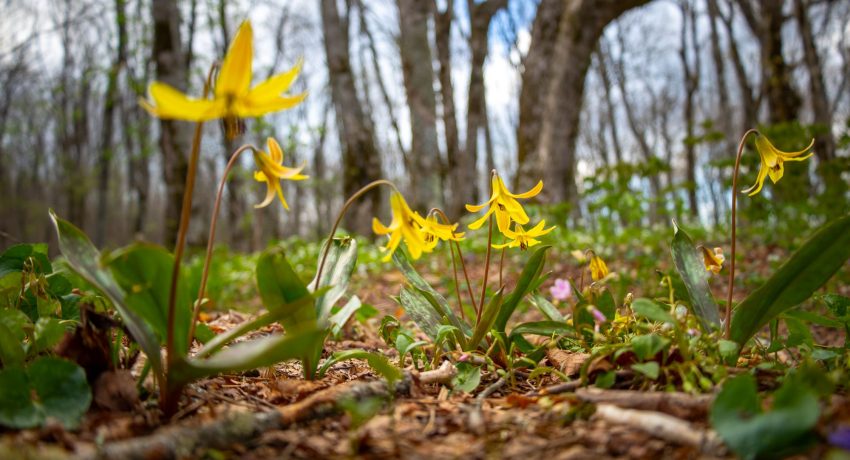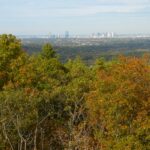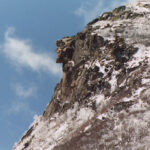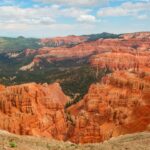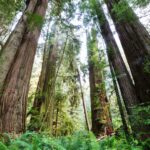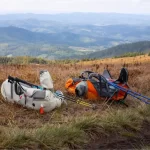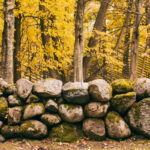Picture this: Winter’s snow has melted into the forest floor, and across New England, fresh buds push through thawing soil, reaching for the light. Spring has officially arrived, but the landscape remains quiet—muted shades of brown and gray stretch across the woods, and the trails are a muddy challenge. It’s tempting to keep your hiking boots stored away and mud-free. But then, nature stirs.
Suddenly, wildflowers emerge from the leaf litter, splashing the forest floor with bursts of color. These spring ephemerals make a fleeting but spectacular appearance, blooming in vibrant contrast to the still-dormant trees. Their beauty is brief, lasting only a few short weeks before they fade back into dormancy.
Whether you’re searching for delicate early bloomers or bold summer blossoms, here are eight hikes that will lead you to some of New England’s best wildflower hotspots.
What are Springtime Ephemerals?
Spring ephemerals—herbaceous, perennial flowers native to deciduous forests—derive their name from their short-lived lifecycles. These flowers rise early in the spring and can only be viewed for a few weeks before they return to a dormant state.
That’s because spring wildflowers seize the opportunity to bloom and set seed during the brief period between the last spring snowmelt and the full leafing of deciduous trees. These ephemerals have adapted to thrive in this narrow window of time when sunlight reaches the forest floor, emerging early to produce leaves and absorb energy before they’re shaded out.
With that said, let’s take a look at where you’ll have the best chance to spot them.
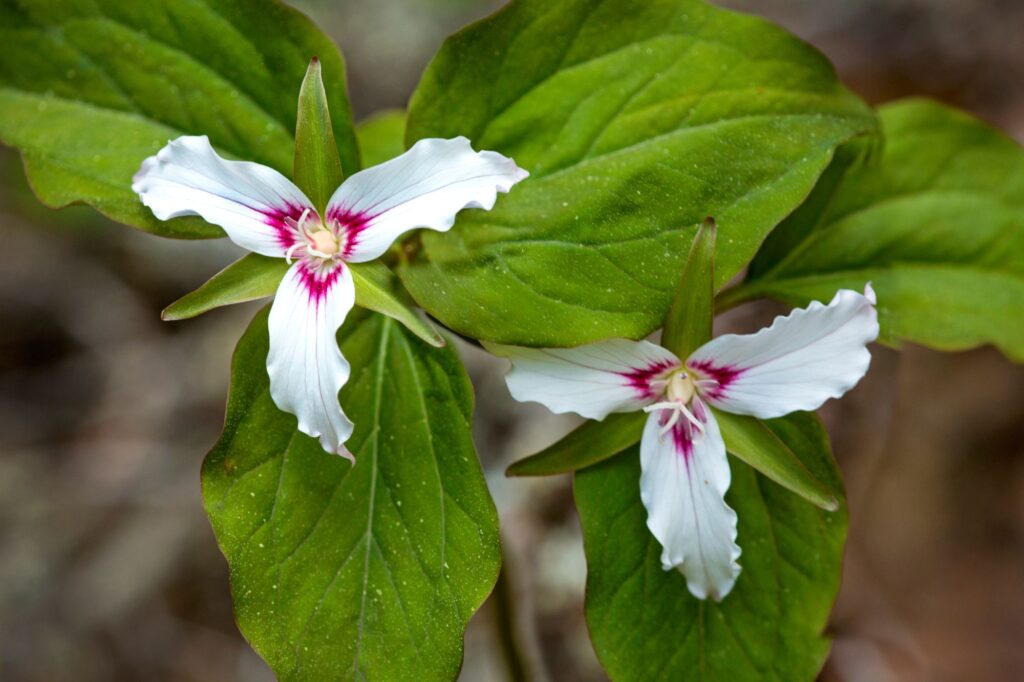
1. Whitecap Mountain via Starr and Iles Trail – Rumford, ME
Nestled in a less-traveled part of western Maine, this trail is packed with scenic views and passes through woodlands that are filled with painted trillium and red trillium. These delicate wildflowers dot the forest floor for the first half- mile of the hike, before the trail begins to gain significant elevation.
The moderate 5.3-mile hike rewards hikers with panoramic views at the summit, but the real treat lies along the trail — watch for these delicate white and pink flowers thriving in the cool shade.
- Wildflowers to Spot: Painted trillium, red trillium and Summer Snowflake
- Best Time to Visit: May
- Difficulty: Moderate
- Distance: 5.3-miles
- Elevation Gain:1,617 ft
- Explore on AllTrails
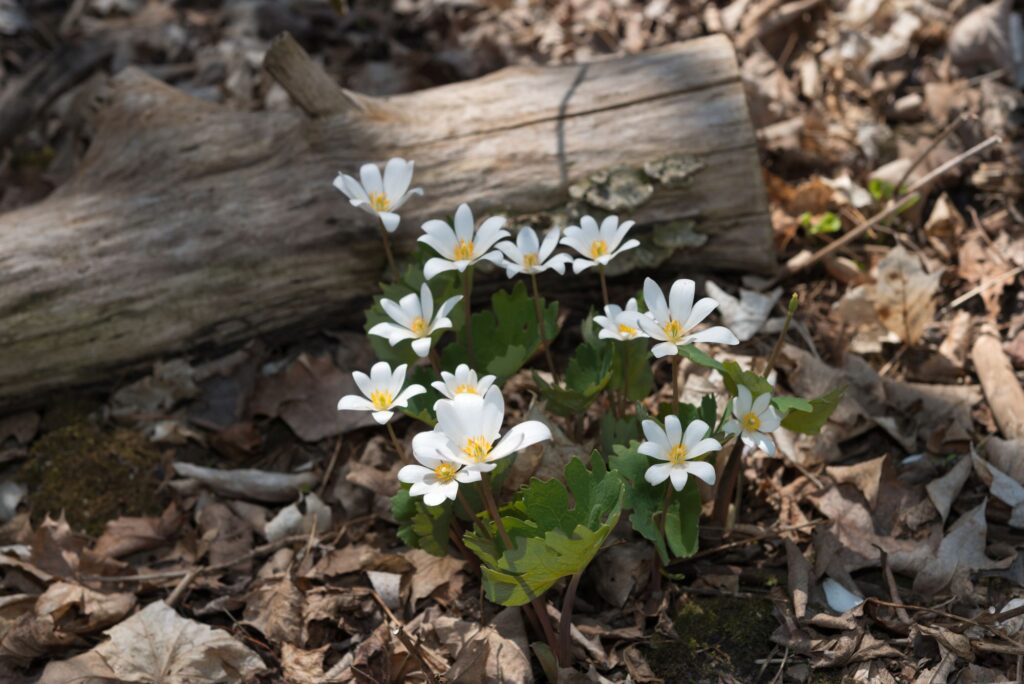
2. Ethan Pond Trail – White Mountains National Forest, NH
If you’re looking for bloodroot, a striking early spring wildflower with white petals and a golden-orange center, head to Ethan Pond Trail in New Hampshire’s White Mountains. This moderate 5.4-mile hike, starting near Crawford Notch, meanders through rich, moist and shaded forests—perfect conditions for bloodroot, trout lilies, and Dutchman’s breeches in April and May.
As its name suggests, the trail brings you to Ethan Pond—one of the most pristine wilderness lakes in the White Mountains. The lake lies in the shadow of Mount Willey and thanks to the surrounding mountains the water is remarkably still as it is well-shielded from the wind.
- Wildflowers to Spot: Bloodroot, trout lilies, Dutchman’s breeches
- Best Time to Visit: April–May
- Difficulty: Moderate / Hard
- Distance: 5.4-miles
- Elevation Gain: 1,564 ft
- Explore on AllTrails
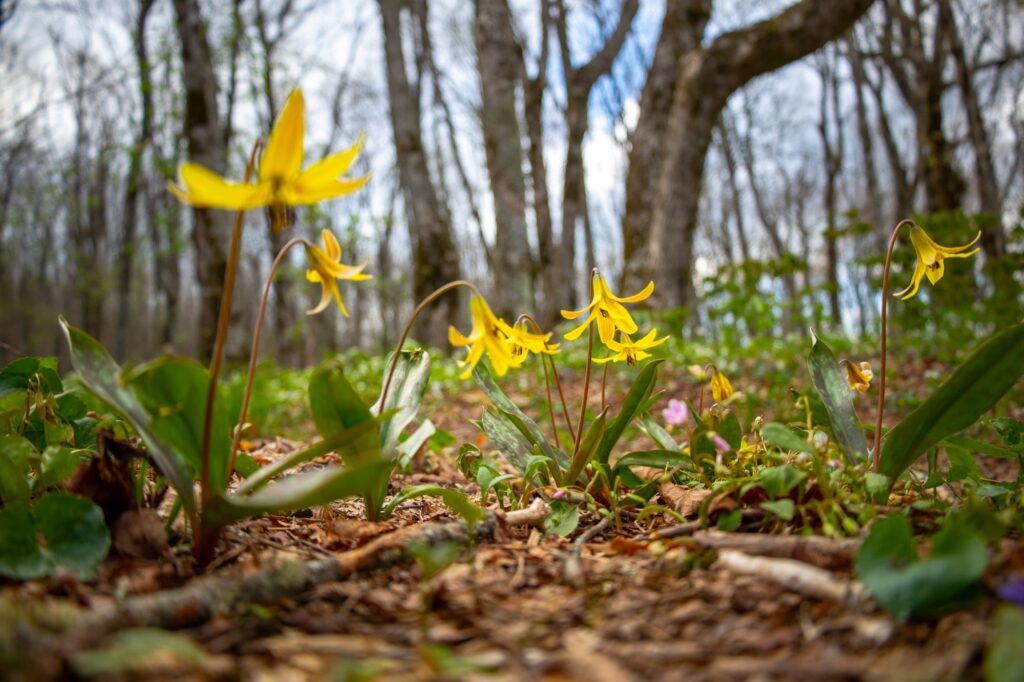
3. Talcott Mountain Yellow Trail – Simsbury, CT
Talcott Mountain’s Yellow Trail in Connecticut is a fantastic choice for a springtime wildflower hike. The trail, which is part of Talcott Mountain State Park, offers a mix of woodlands, open ridges, and rocky outcrops, creating diverse habitats for wildflowers to thrive.
This moderate 2.5-mile loop leads to the famous Heublein Tower — a historic 165-foot structure atop Talcott Mountain, offering panoramic views of the Hartford skyline and Farmington River Valley from the observation deck on the top floor.
- Wildflowers to Spot: Jack-in-the-pulpit, wood anemone, trout lilies, trillium
- Best time to visit: April – June
- Difficulty: Moderate
- Distance: 2.7-miles
- Elevation Gain: 436 ft
- Explore on AllTrails
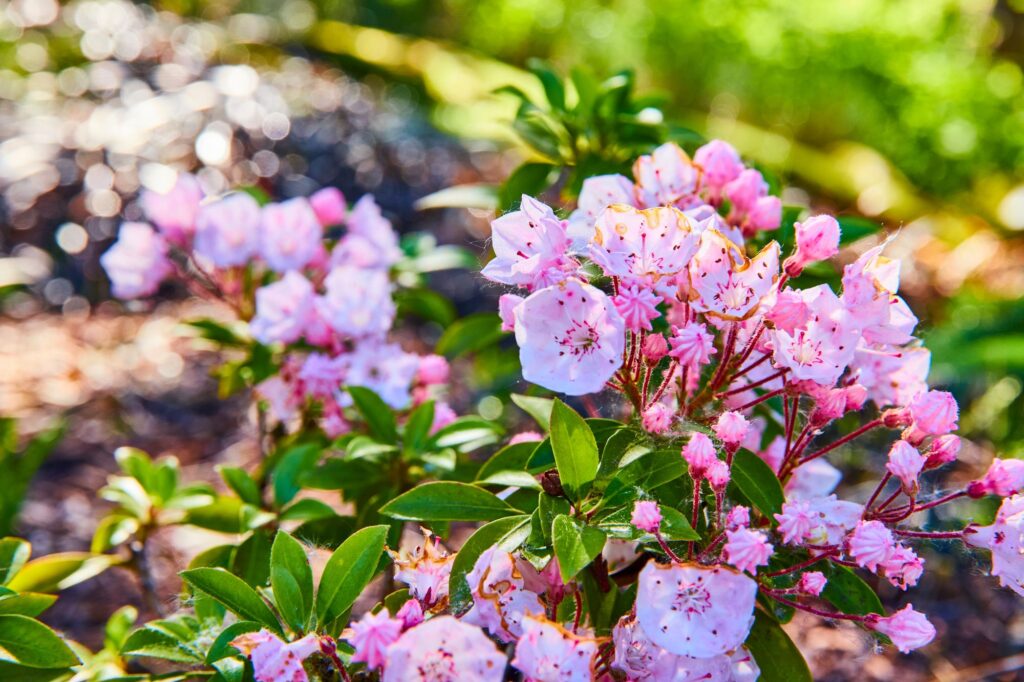
4. Long and Ell Pond Trail – Hopkinton, RI
If you’re a seasoned hiker in New England, you know that Rhode Island rarely makes the lists of best hikes — but the Long and Ell Pond Trail is a standout trail whose rhododendrons and mountain laurel blooms earn it a spot on that list.
It’s hard to believe this hike is in Rhode Island as you scramble up steep, rocky terrain, surrounded by dense thickets of blooming laurel and rhododendron. One adventurer put it well: “This is one of the best hikes in the state in any season, the blooming laurels are an added bonus.” The trail winds through rocky outcrops and dense laurel thickets, which bloom in soft pastel hues in early summer.
- Wildflowers to Spot: Mountain Laurel and Rhododendron
- Best time to Visit: June-July
- Difficulty: Hard
- Distance: 5.3-miles
- Elevation Gain: 450 ft
- Hike Info: TrailForks, Trail Description
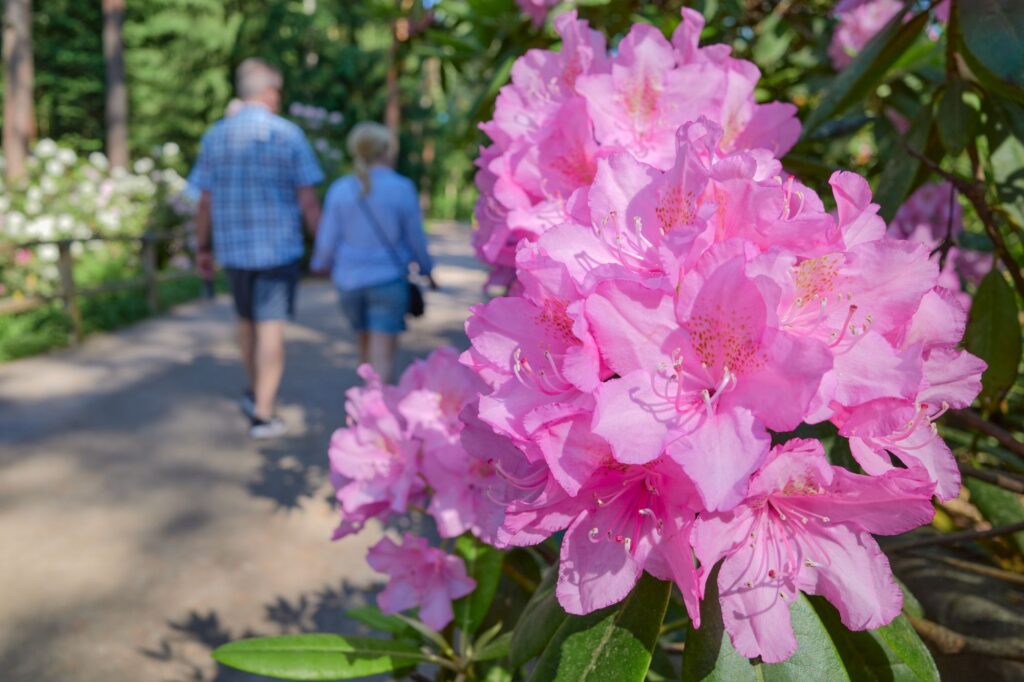
5. Rhododendron State Park – Fitzwilliam, NH
This 16-acre rhododendron grove, one of the largest in New England, creates a tunnel of pink and white blossoms. For an explosion of rhododendrons, visit this park in mid-to-late July. Visitors can explore the easy, 1-mile loop trail that winds through the heart of the rhododendron grove, offering a close-up view of these spectacular blooms.
There is a $4 entrance fee for adults and a $2 fee for children. The giant rhododendron’s fragrant clusters of pink and white blossoms bloom in mid-July, often lingering for several weeks.
- Wildflower to Spot: Rhododendron
- Best Time to Visit: July
- Difficulty: Easy
- Distance: 0.6-mile
- Hike Info: NH State Parks
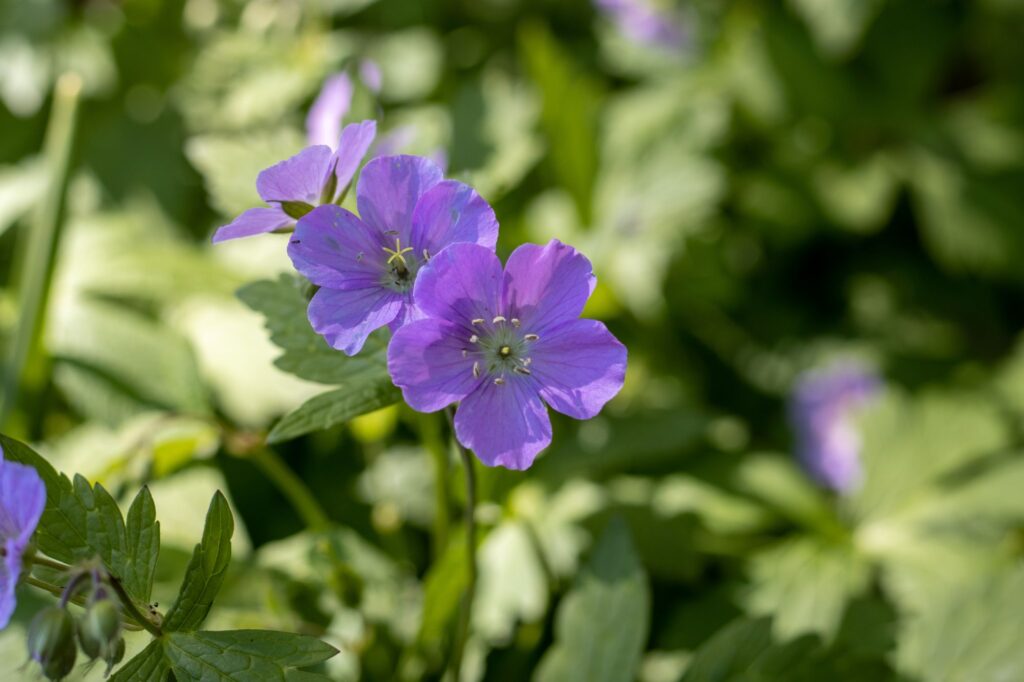
6. Moose Hill Wildlife Sanctuary – Sharon, Mass.
Moose Hill Wildlife Sanctuary, Mass Audubon’s oldest and largest sanctuary, features a diverse landscape of forests, fields, and vibrant wetlands, all just a short distance from Boston. On the 2.5-mile trail out to Bluff Overlook, you’ll have a chance to see wild geranium, azure bluets, Siberian Squill and lily of the valley.
There is a $4 admission. After the hike, visit the Nature Center to learn about the region, native wildlife and the history of Mass Audubon.
- Wildflower to Spot: Azure bluets, wild geranium, rue anemone and lily of the valley
- Best Time to Visit: Apil – June
- Difficulty: Moderate
- Distance: 0.6-miles
- Explore on AllTrails
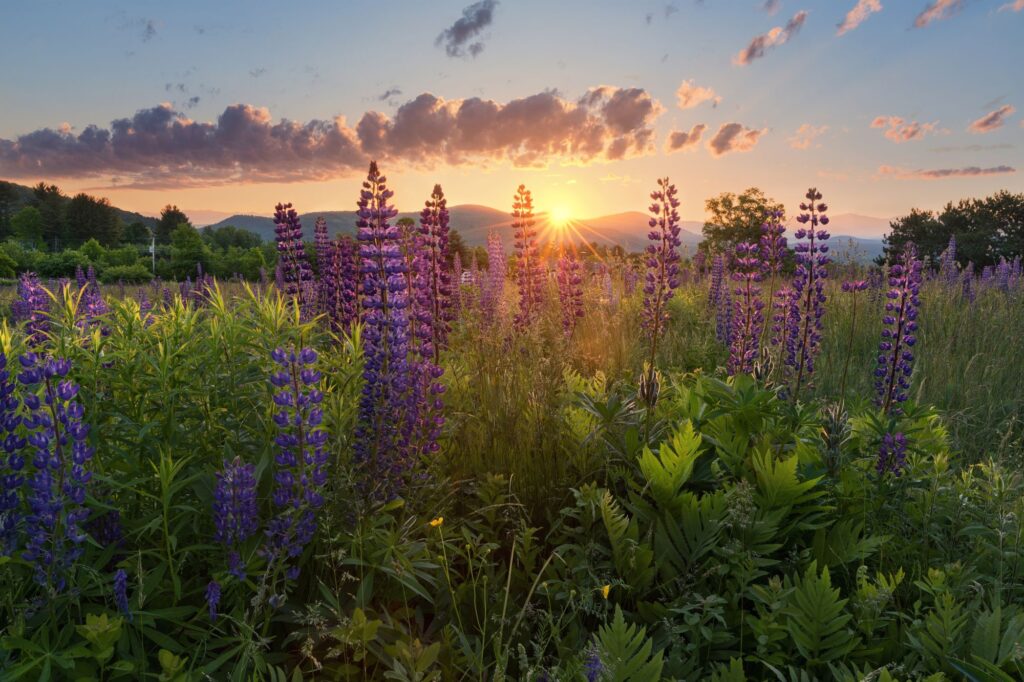
7. Lupine Fields in Sugar Hill, NH
While not a traditional hiking trail, Sugar Hill’s rolling meadows burst into color with vibrant purple, pink, and blue lupines. But it’s not just the wildflowers that make this spot so special: they’re also set against the backdrop of the White Mountains. It is one of the most scenic destinations in New England, and can easily be combined with a hike up Mount Moosilauke or Mount Kinsman.
- Wildflower to Spot: Lupines
- Best Time to Visit: June
- Locations: Sugar Hill Overlook on Sunset Hill Road, St. Matthew’s Chapel in Sugar Hill
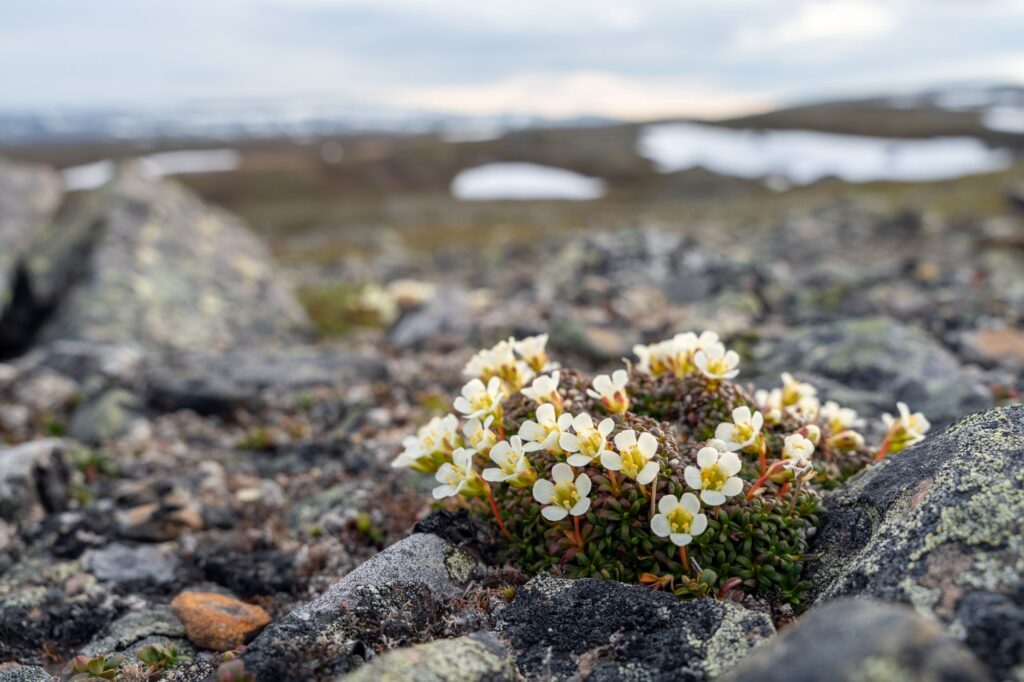
8. Mount Washington via Tuckerman Ravine Trail – Presidential Range, NH
We’ve saved the most challenging hike for last—and for good reason. The trek up Mount Washington gains nearly a mile of elevation, but at the summit, you’ll find something truly special: an island in the sky.
The alpine ecosystems atop New England’s highest peaks—including Mount Washington, the tallest of them all—are often called “islands” due to their isolation, scarcity, and extreme conditions. Life here endures bone-chilling temperatures and some of the fiercest winds on the planet. And yet, against all odds, a select few wildflowers manage to thrive. For a brief period each summer, this harsh landscape transforms into a delicate and colorful alpine garden.
Rare wildflowers like Diapensia, Lapland Rosebay, and Mountain Avens bloom here, along with Robbins’ Cinquefoil, an alpine plant found nowhere else on Earth.
The resilience and rarity of this small but mighty alpine plant community make Mount Washington a true natural wonder—and a deserving final stop on our journey.
- Wildflower to spot: Diapensia, alpine azaleas, lapland rosebay, mountain avens and (if you’re lucky) robbins’ cinquefoil
- Best Time to Visit: Late June–July
- Difficulty: Hard
- Distance: 7.7-miles
- Elevation Gain: 4,238 feet
- Explore on AllTrails

